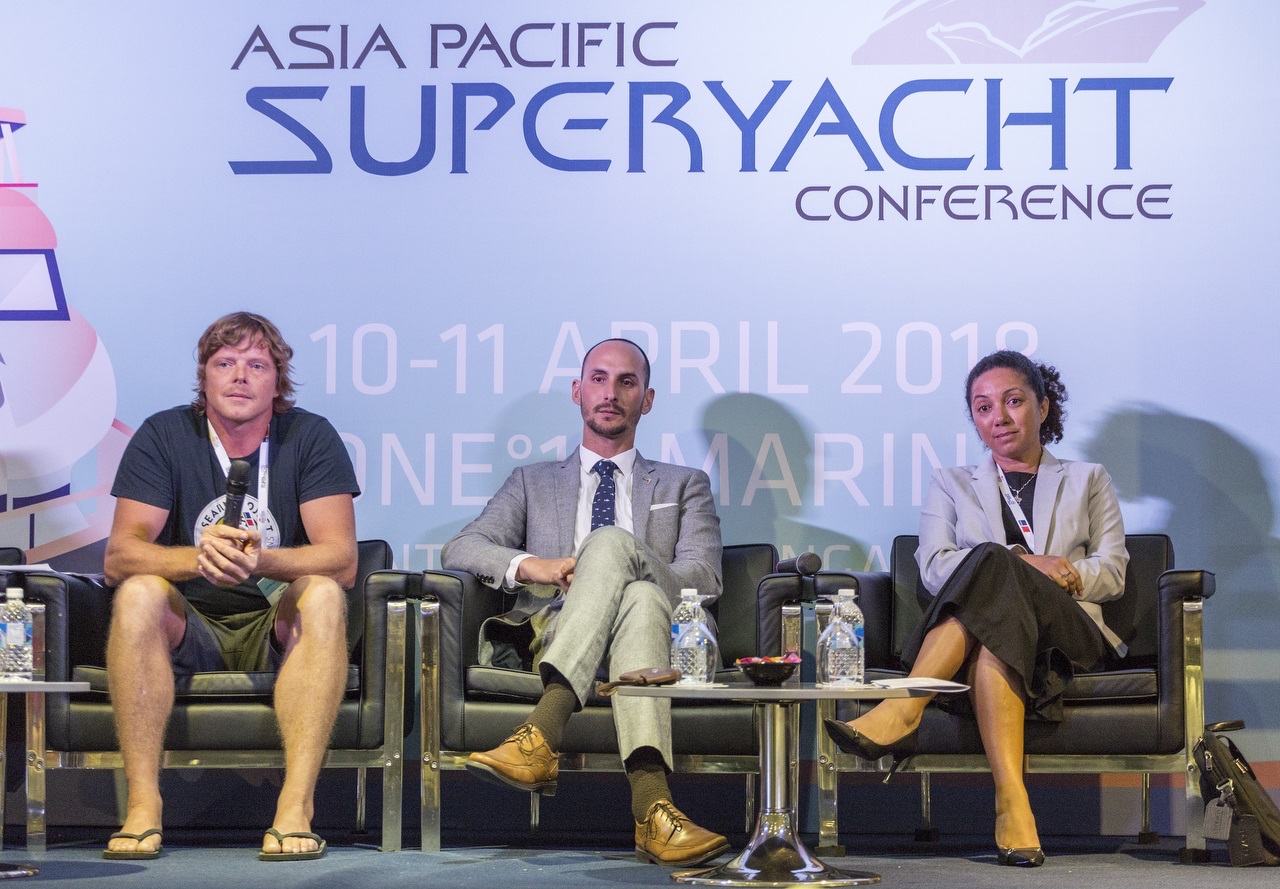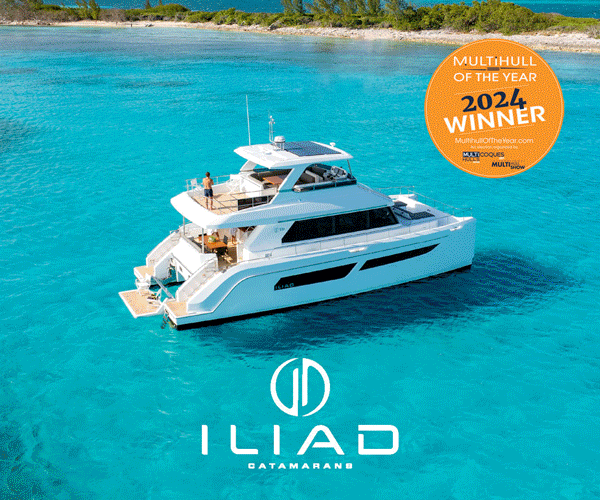Nautical chart for Asia
The 2018 Asia Pacific Superyacht Conference provided industry professionals with a nautical chart for moving forward in a sustainable way.
Photography by Guy Nowell
19 April 2018
The theme of this year’s conference at the Singapore Yacht Show was ‘Turning Issues into Opportunities’, and Andy Treadwell, CEO of show organisers Verventia, suggested in his opening address some ways to do just that. He highlighted the vast potential, pent up by decades of inaction, that Asia has to offer to the yachting community, as well as that which is equally on offer to Governments in the region.
Martin Redmayne, returning as conference Chairperson, gave a keynote address that focused on the challenges and opportunities facing the superyacht industry in general and Asia in particular. Redmayne looked closely at the facts and figures of the superyacht industry over the last 25 years and discussed the potential for growth in the future. “With only 120 superyachts being produced last year, this is a rarified world in which we operate, but with the continuing rise of the number of billionaires in Asia there is huge potential.”
Key expert panelists Nigel Beatty (Asia Pacific Superyacht Association), Jean- Marc Poullet (Burgess Asia), and Barry Jenkins (Superyacht Australia) shared their knowledge of regional developments in the superyacht industry.
Li Ning, Secretary-General of the Hainan Cruise & Yacht Association, reported that the Association has been given the green light by the Central Chinese Government to establish a blueprint for yachting in China. Hainan has been designated a ‘special development zone’ – a test bed for the further development of the leisure marine industry, the sport, and the recreational activity.
Tobias Kohl (MTU) explored the possibility of a ‘one size fits all’ configuration for yacht e-propulsion systems, and the best way to successfully integrate the different components of an electric drive. The conversation then moved to identifying the needs and unique preferences of Asian clients. Carmen Lau Stratton (Camper & Nicholsons Asia), Rock Wang (Burgess China), Farouk Nefzi (Feadship), Peter Mahony (Benetti) and Luigi Adamo (Sanlorenzo) all shared invaluable insights on engaging potential Asian owners. All agreed that Asia is multifaceted, and diversity is key.
The final session of the first day was a series of round table discussions centred on: maximising strategic partnerships in Asia; managing successful marinas; connecting tourism and yachting; future developments in communication, and the effect of protective coatings on a yacht’s performance.
Okto Irianto, Director of Maritime Services Indonesia, opened day two by updating the delegates on current regulatory developments. Indonesia is the prime location for superyacht cruising, and Raja Ampat is one of the most popular destinations, but it seems a lot of work still needs to be done. Delegates were advised that Indonesia is considering reducing or abolishing the current punitive and prohibitive Luxury Tax, in anticipation of attracting more big boats to the country – and chartering can be facilitated if a visiting yacht charters through a locally-incorporated company and re-flag themselves as an Indonesian vessel for the duration of its visit.
The opening address was followed by a panel discussion on ‘Building a Comprehensive Marina Network in Asia’. Dang Bao Hieu (Ana Marina, Vietnam) Colin Bransgrove (Marina Industries Association, Australia) and Mark Ray (Marinetek, Southeast Asia) discussed some of the new projects in the region. Nikko Karki (Indo Yachts), Captain Mike Rouse and Y.H Fang (Singapore Yachting) explored initiatives on how to build confidence for cruising and chartering in Asia. The result was a plea for transparency and free exchange of information, and an estimate of how much economic impact a chartering superyacht really has on the places it visits.
Angela Pennefather and Justin Hofman (EYOS Expeditions) shared their insights into ‘The Rise of Expedition Yachting.’ “Asia offers almost too many options,” said Hofman.
“You can cruise parts of Asia where there are so many islands and so few boats that an expedition really is an adventure.”
Adventurous clients are coming to Asia to see what’s here before it disappears. Unlike cruise ships, superyachts and their guests leave a very small cultural footprint, are highly environmentally aware, and the ‘toys’ they bring with them – especially submersibles – are often deployed in the name of exploration and scientific research.
Pete Ceglinski, CEO of the Seabin Project, reminded the conference that 95% of the world’s ocean-borne plastic originates in Asia, and that the Seabin is not the answer to ocean pollution – it is no more than an effective contribution to a cleanup effort. The actual answer is education.”
Richie Blake (Döhle Yachts) spoke briefly but comprehensively about the new Red Ensign Group Yacht Code, and Paul Miller (Hiscox MGA) presented an Insurance Perspective on the superyacht market in Asia.
The final conference session was a ‘fireside chat’ with superyacht designer Espen Øino and superyacht builder Michael Breman (Lürssen) to consider the immediate future of the superyacht market. “The best thing you can do with a yacht is go places that you couldn’t otherwise go without taking your house with you,” proposed Breman. Some boats have been doing this for many years, such as Octopus (owned by Paul Allen of Microsoft). Harking back to the earlier comments from EYOS Expeditions, Øino suggested that very large yachts would increasingly find a real role for themselves as contributors to research.
In wrapping up, Chairperson Redmayne reminded everyone once more (in case a reminder was required) that “Asia has so much to offer. The superyacht industry needs to capitalise on what is already here, not reinvent the wheel. Get the house in order – and go yachting.”









